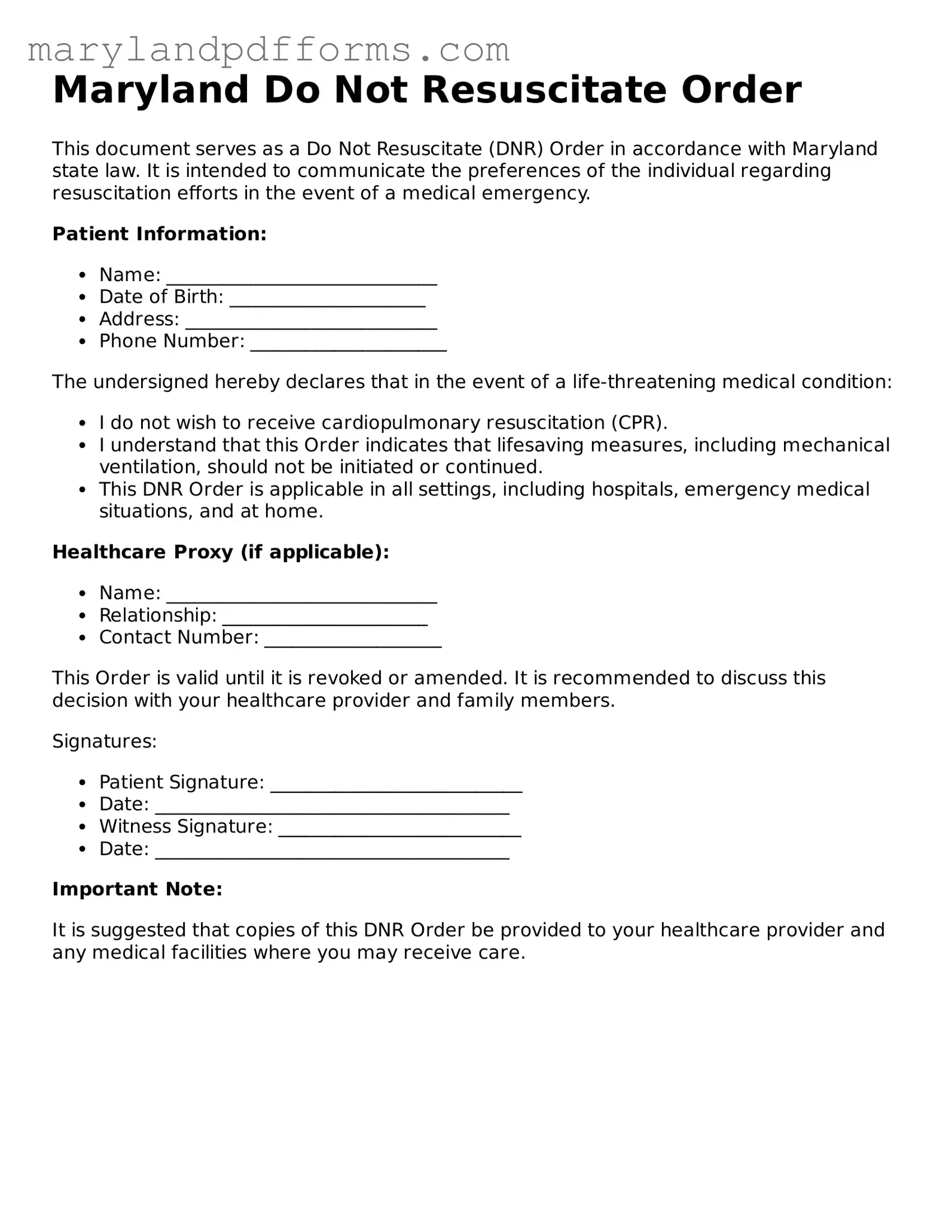What is a Do Not Resuscitate (DNR) Order in Maryland?
A Do Not Resuscitate Order is a legal document that allows a person to refuse specific life-saving medical treatments, such as CPR, in the event of cardiac arrest or respiratory failure. In Maryland, this order is recognized by healthcare providers and must be followed by emergency medical personnel.
Who can request a DNR Order in Maryland?
In Maryland, a DNR Order can be requested by an adult who is capable of making their own healthcare decisions. Additionally, a legally authorized representative, such as a parent or guardian for a minor, can also request a DNR Order on behalf of someone who cannot make decisions for themselves.
You can obtain a DNR Order form from various sources:
-
Healthcare providers, such as doctors or hospitals, can provide the form.
-
The Maryland Department of Health website offers downloadable forms.
-
Local health departments may also have copies available.
The DNR Order form requires several key pieces of information:
-
The patient's name and date of birth.
-
The signature of the patient or their authorized representative.
-
The signature of a physician or nurse practitioner who has discussed the order with the patient.
Is a DNR Order valid in all healthcare settings?
Yes, a DNR Order is valid across various healthcare settings in Maryland, including hospitals, nursing homes, and during emergency medical services. However, it is essential that the order is clearly documented and readily accessible to healthcare providers to ensure it is honored.
Can a DNR Order be revoked?
Yes, a DNR Order can be revoked at any time by the patient or their authorized representative. To revoke the order, simply inform your healthcare provider or remove the DNR Order form from your medical records. It is advisable to communicate this change clearly to ensure that all medical personnel are aware of the revocation.
What should I do if I have questions about my DNR Order?
If you have questions about your DNR Order, it is best to consult with your healthcare provider. They can explain the implications of the order, discuss your medical condition, and help you understand your options. Additionally, legal professionals who specialize in healthcare law can provide guidance if needed.
